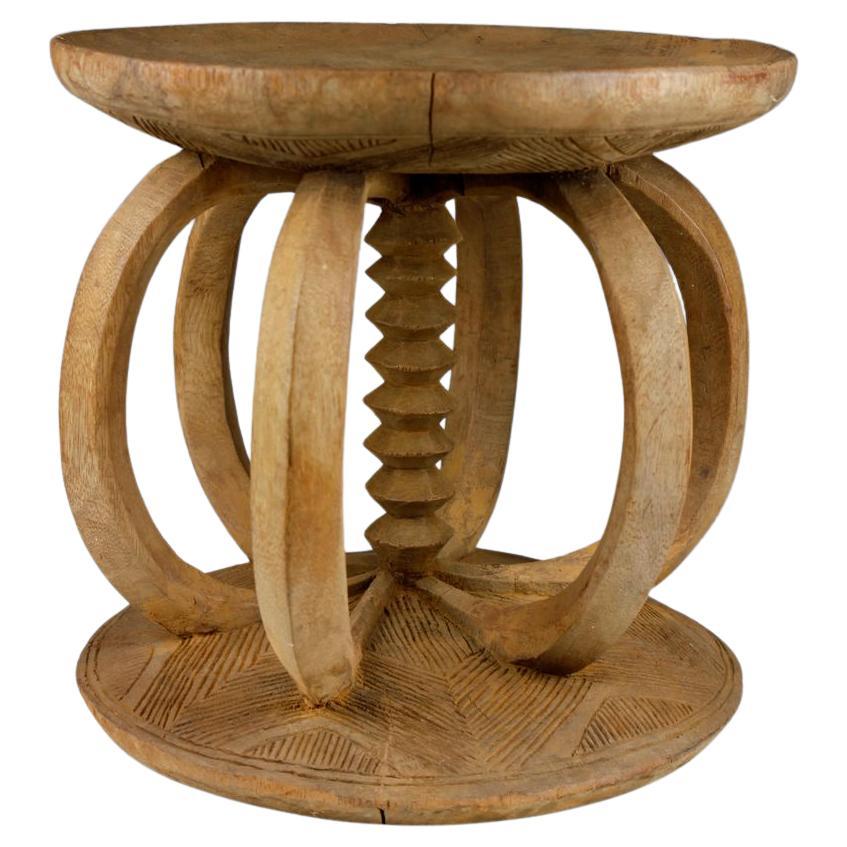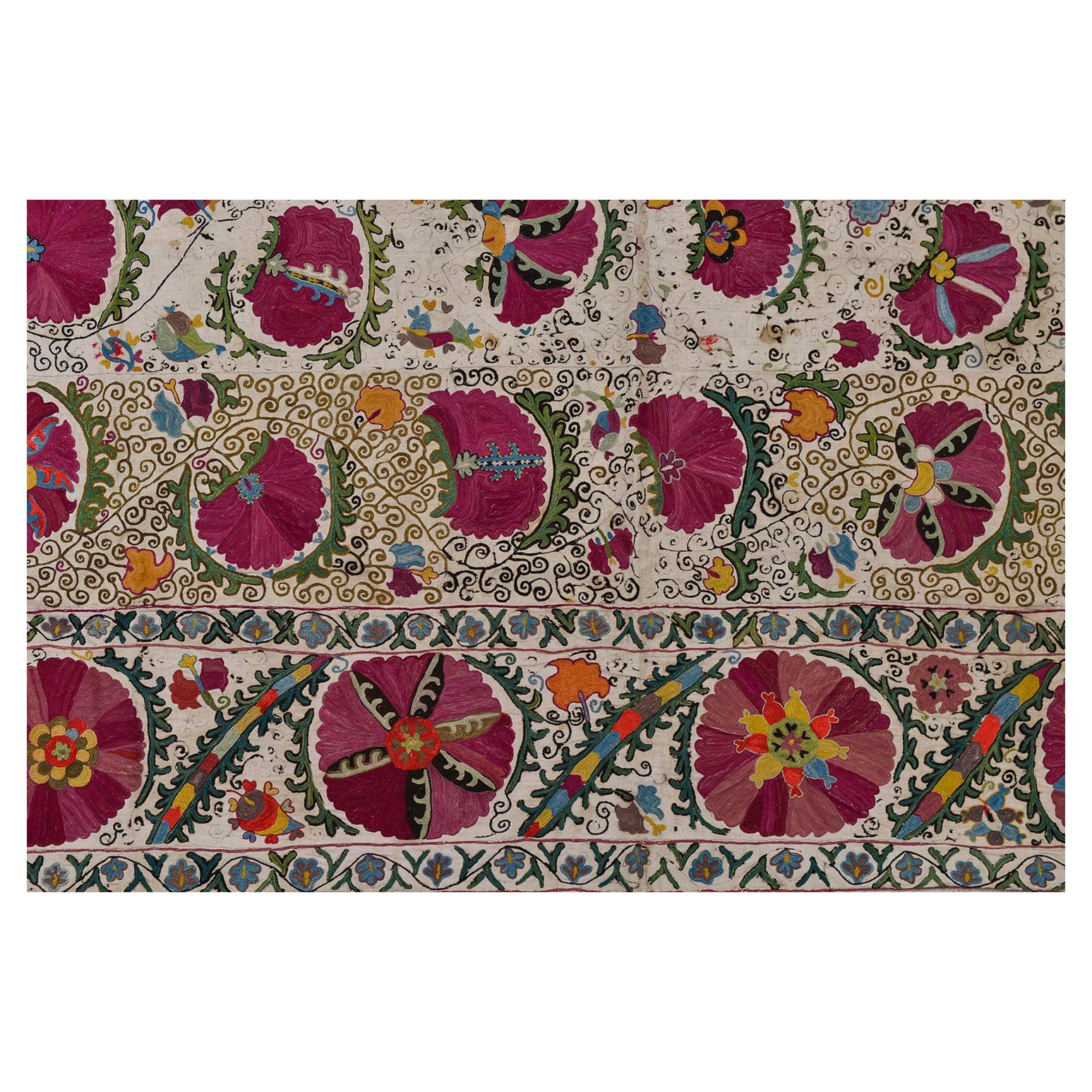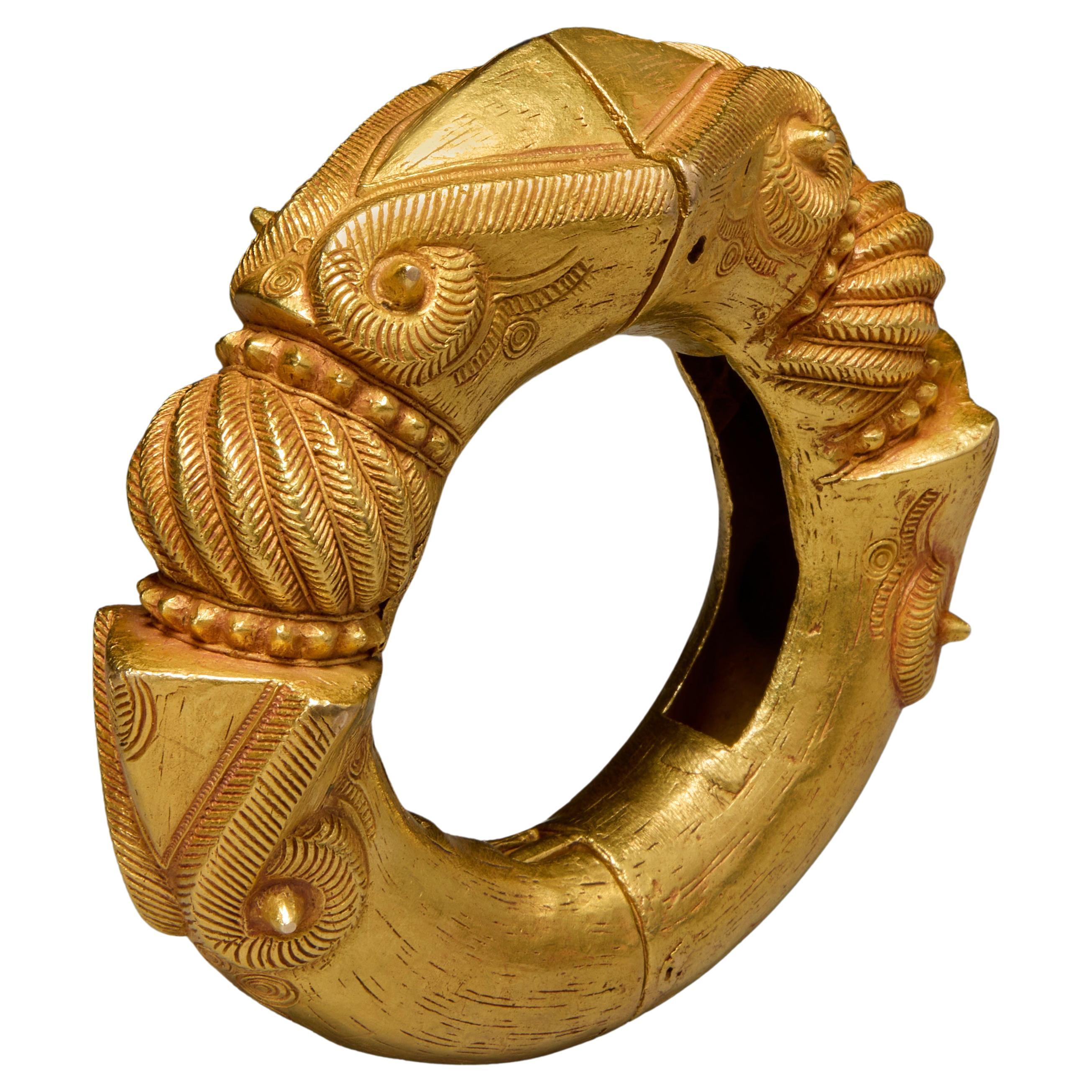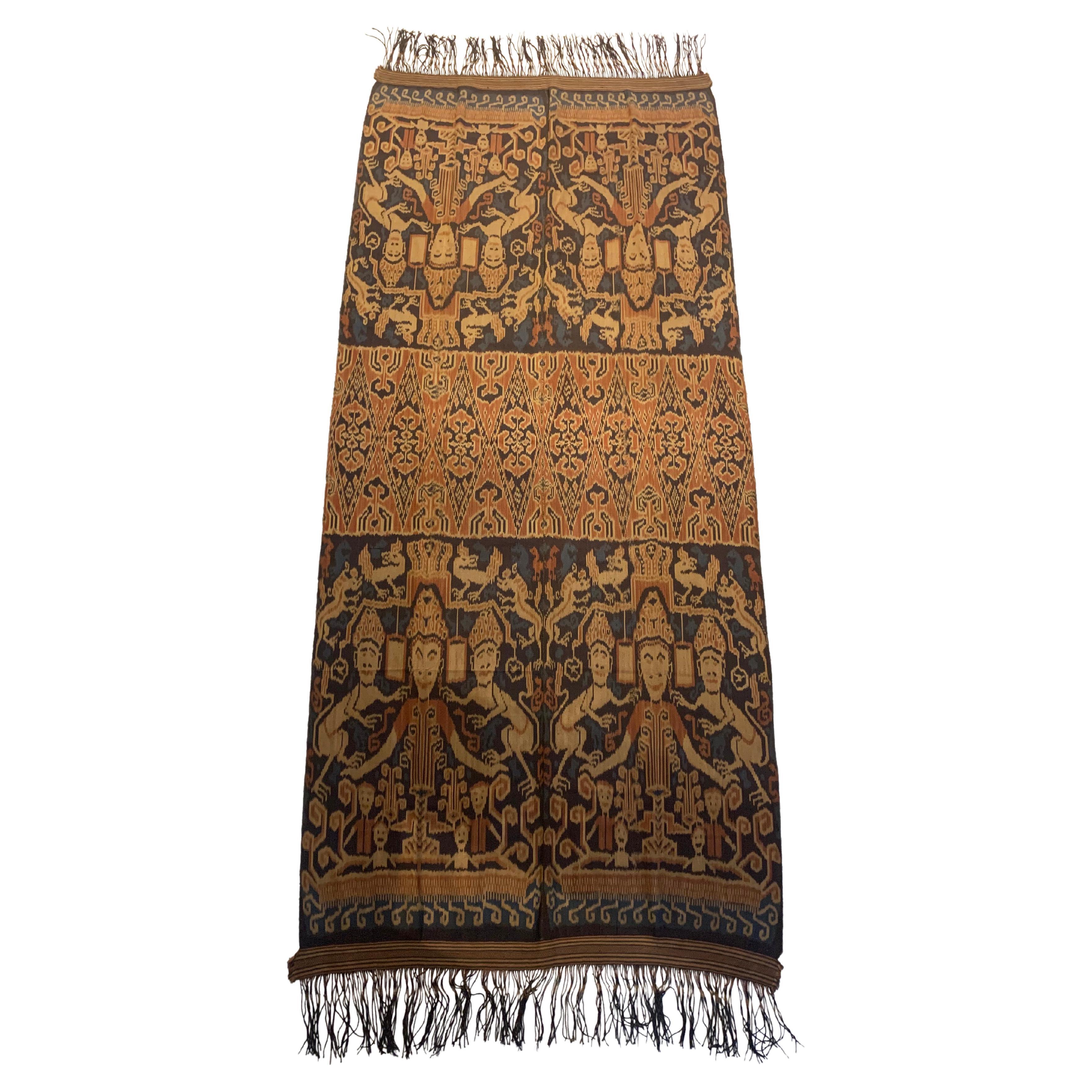Items Similar to A Rare and Historically Important Artefact Recovered from HMS Adventure in 1775
Want more images or videos?
Request additional images or videos from the seller
1 of 12
A Rare and Historically Important Artefact Recovered from HMS Adventure in 1775
About the Item
A Rare and Historically Important Artefact Recovered from HMS Adventure in 1775 after Captain James Cook’s Second Voyage to the Pacific
A ‘coconut husker’ made by a ship’s carpenter aboard HMS Adventure in the style and design of a Native Islander’s ethnographical ‘coconut husker’
An engraved and inscribed copper plaque:
A memento from
The Sandwich Islands
Coconut Husker used aboard
HMS Adventure
and recovered from
The Royal Dockyard Deptford
1775
Oak, iron, brass, copper, handmade iron screws
Fine rich colour and patina
England / Sandwich Island
18th Century
SIZE: 15.5cm high, 49.5cm long, 20cm wide (max) - 6¹⁄₈ ins high, 19½ ins long, 7⁷⁄₈ ins wide (max)
Provenance:
Found in a Scottish attic after centuries of lying hidden in a crate
Ex Private Scottish collection
Captain James Cook’s second voyage aboard the Resolution and accompanied by HMS Adventure set sail in July 1772. The discovery of the southern eight islands of the Sandwich Islands group was in 1775. The given name was chosen in honour of John Montagu, 4th Earl of Sandwich, First Lord of the Admiralty.
The copper plaque and inscription however should not be read as The Sandwich Islands ‘Owhyhee’ (The Hawaiian Islands) which were later discovered on January 18th, 1778, on Captain Cook’s third voyage. Rather the inscription refers to ‘South Sandwich Islands’ lying to the south east of South Georgia and only renamed later with the word ‘South’ to distinguish them from the ‘Sandwich Islands’ now known as the Hawaiian Islands.
Not withstanding during Cook’s second voyage he visited Easter Island, Tahiti, Society Islands, Niue, Tonga, New Hebrides, New Caledonia, Norfolk Islands, Palmerston Island and South Georgia. The crew onboard having been exposed to various types of ‘coconut huskers’ adapted those designs into the example we now see, having been rescued from HMS Adventure in 1775. A rare example of 18th century cross-cultural design and adaptation.
On the 13th of July 1772 HMS Adventure left Plymouth commanded by Tobias Furneaux one of two ships the other being ‘Resolution’ commanded by a captain James Cook. They were to be the first ships to cross the arctic circle. Tobias Furneaux was also the first man to circumnavigate the globe in both directions.
‘Breadfruit, ripe bananas, taro and pandanus nuts mixed with coconut cream and cooked with hot stones’ was the favourite pudding of Captain James Cook. Coconuts were essential on board ship in the late 18th century and were stored de-husked. They were often traded for European goods when fresh provisions were needed. ‘Twenty coconuts or breadfruit for a forty-penny nail; ten for a white glass bead and six for an amber one’ (Salmond, p. 68) was the going rate at the time.
On return from Cooks second voyage in 1775, HMS Adventure entered the Royal Dockyard at Deptford to be converted into a store ship. It was at this time this coconut husker must have been acquired as a valuable ‘Momento’ (as stated on the Plaque) of the now famous voyages of the Adventure and the Resolution.
- Dimensions:Height: 6.13 in (15.58 cm)Width: 7.88 in (20.02 cm)Depth: 19.5 in (49.53 cm)
- Materials and Techniques:
- Place of Origin:
- Period:16th Century
- Date of Manufacture:Circa 1770
- Condition:Wear consistent with age and use.
- Seller Location:London, GB
- Reference Number:1stDibs: LU9363237482892
About the Seller
No Reviews Yet
Vetted Seller
These experienced sellers undergo a comprehensive evaluation by our team of in-house experts.
Established in 1989
1stDibs seller since 2023
- ShippingRetrieving quote...Ships From: London, United Kingdom
- Return PolicyA return for this item may be initiated within 14 days of delivery.
More From This SellerView All
- A Rare and Finely Carved Egyptian Wooden HeadrestLocated in London, GBA Rare and Finely Carved Egyptian Wooden Headrest with a Carved Head to both Sides Representing the God ‘Bes’ (Protector of the Homestead) above Carved...Category
Antique 15th Century and Earlier Egyptian Tribal Art
MaterialsWood
- A Rare and Exceptional Carved Headrest ‘Kali Hahapo’Located in London, GBA Rare and Exceptional Carved Headrest ‘Kali Hahapo’ Excellent colour and patina Wood, sennet (coconut fibre), glass beads Tonga Late 18th / Early 19th Century SIZE: 19cm high, 5...Category
Antique Early 19th Century Tongan Tribal Art
MaterialsNatural Fiber, Glass, Wood, Coconut
- A Very Fine and Rare Headrest ‘Kali’ or ‘Kalimasi’ / ‘Kali Toloni’Located in London, GBA Very Fine and Rare Headrest ‘Kali’ or ‘Kalimasi’ / ‘Kali Toloni’ Bamboo, wood, coconut ‘sennet’ fibre The ‘cross-bar’ (rest) engraved with triangular design reminiscent of ‘Tapa C...Category
Antique Early 19th Century Tongan Tribal Art
MaterialsBamboo, Natural Fiber, Wood, Coconut
- A Rare Wood Ear OrnamentLocated in London, GBA Rare Wood Ear Ornament With old collectors label ‘Ear Wood. Paraquay’ Wood Paraguay 19th Century Size: 6cm dia., 3.5cm deep - 2¼ ins dia., 1¼ ins deep Published: Steven Phe...Category
Antique 19th Century Paraguayan Tribal Art
MaterialsWood
- A Rare Anthropomorphic Tsonga HeadrestLocated in London, GBA Rare Anthropomorphic Tsonga Headrest An old paper label: ‘African Pillow Bt. Webster. Sep 1897. P.’ Fine colour and patina through use Wood, pigment, paper label Zimbabwe 19th...Category
Antique 19th Century Zimbabwean Tribal Art
MaterialsWood, Paper
- A Very Rare Long Maori Paddle ‘Hoe’Located in London, GBA Very Rare Long Maori Paddle ‘Hoe’ Superb colour and patina Wood Maori / New Zealand Late 18th / early 19th Century Size: 217cm long - 85½ ins long Provenance: W.D. Webster, B...Category
Antique Late 18th Century New Zealand Tribal Art
MaterialsWood
You May Also Like
- Important and Rare Igbo Prestige StoolLocated in London, GBThis large, rare Igbo title stool from Nigeria displays a wonderful sculptural form. The circular seat and base are connected by a series of beautifully curved supporting legs, whi...Category
20th Century Nigerian Tribal Tribal Art
MaterialsWood
- Rare Silk Embroidered Antique Suzani from Private CollectionLocated in Alessandria, PiemonteThis is not a simple beautiful embroidered susani: it's a museum specimen. This ancient piece was embroidered in the surroundings of the ancient central city of Bokhara, on the Sil...Category
Antique Late 19th Century Turkmen Other Tribal Art
MaterialsCanvas
- Rare Gold Ashanti Royal Bracelet from Jacaranda TribalLocated in New York, NYThis magnificent gold bracelet was made for Ashanti royalty. The Ashanti Kingdom's wealth was significantly based on gold-mining and trading in gold, as well as agriculture. The ki...Category
Early 20th Century Ghanaian Tribal Art
MaterialsGold
- Rare Ikat Textile from Sumba Island Stunning Tribal Motifs, IndonesiaLocated in Jimbaran, BaliThis Ikat textile originates from the Island of Sumba, Indonesia. It is hand-woven using naturally dyed yarns via a method passed on through generations. It features a stunning array of distinct tribal patterns and motifs. Chickens are a common motif found amid sumba textiles...Category
Vintage 1920s Indonesian Other Textiles
MaterialsYarn
- Rare Ikat Textile from Sumba Island Stunning Tribal Motifs, IndonesiaLocated in Jimbaran, BaliThis Ikat textile originates from the Island of Sumba, Indonesia. It is hand-woven using naturally dyed yarns via a method passed on through generations. It features a stunning array...Category
Vintage 1920s Indonesian Other Textiles
MaterialsYarn
- Pendant in Shell from Papua-New-GuineaLocated in Schellebelle, BEBeautiful pendant made out of 3 different Shell species, from Papua-New-Guinea from the 1960 ies, the shells have a good and old patina and shine, the pendant was used during ceremon...Category
Vintage 1960s Papua New Guinean Tribal Art
MaterialsShell
Recently Viewed
View AllMore Ways To Browse
Ceremonial Stick
Hickory Chair Factory
Historical Objectivity Seller
India Crewel
Kandem Opaline
Karen Klint
Klismos Chairs India
Kohn Dressing Table
Lorimer Dining Table
Mandalay Pattern
Modern Giraffe Indoor Chandelier Lamp
Nut Bowl And Cracker
Oscar Niemeyer Swivel Armchairs
Pair Italian Gilt Sconces Pineapple
Piero Fornasetti Ice Bucket
Pilkington Silver
Pyramid Gravy
Repousse Sterling Silver Tea Set With Tray





